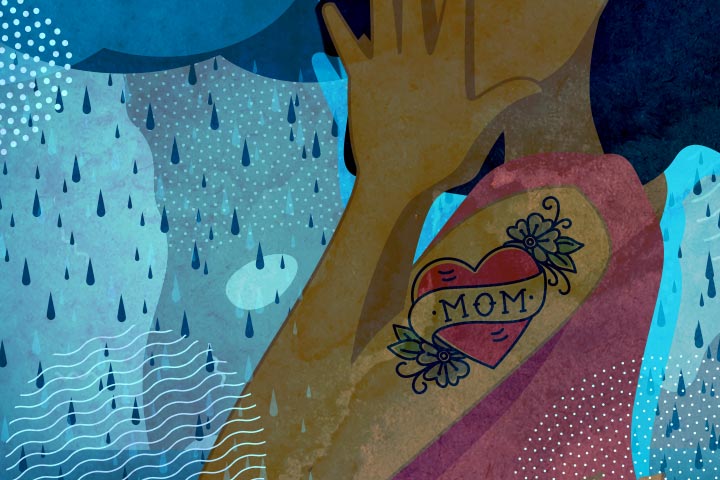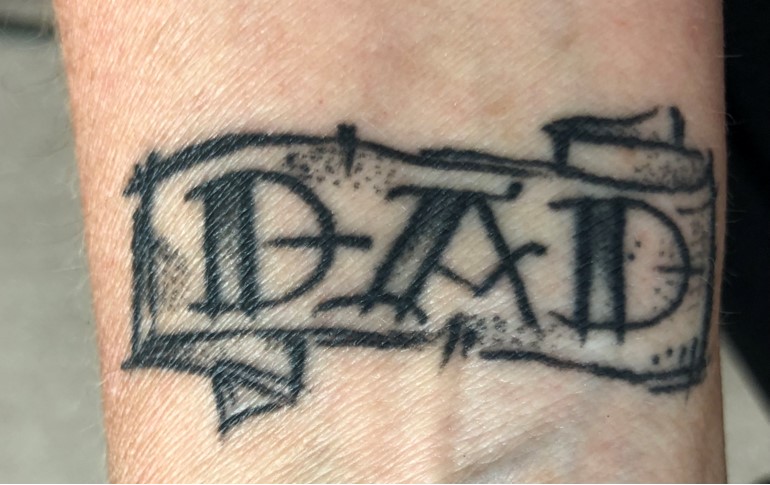The passing of a loved one can be utterly devastating. Grief is all-encompassing, and for some, it never really goes away.

Tattoos present a unique way to cope with the grief.
“Memorial tattoos help continue bonds with the deceased,” said Deborah Davidson.
She works as a professor of sociology at York University, and she’s the creator of The Tattoo Project.
READ MORE: More names to be added to singer’s tattoo tribute to suicidal youth
“Tattoos can be understood as a form of public storytelling,” said Davidson. “Stories help us make sense and meaning out of things that happened to us.”
When placed in a spot where other people can see it — as most are — a memorial tattoo is often an intentional conversation-starter.
“People fear their loved one will be forgotten… not by themselves, but by others,” Davidson said.
READ MORE: How to talk to your kids about the death of a loved one
Some memorial tattoos have a beginning and an end date, making it obvious that it represents a life that has come to an end. However, in Davidson’s experience, most memorial tattoos are more inconspicuous.
“The stories associated with lots of these tattoos are not sad stories. People want to remember their loved ones and have happy memories of them,” she said.
The permanence of body tattoos can also have a comforting quality for someone dealing with tragic loss.
WATCH BELOW: Building up resilience to grief helps prepare for life’s losses

In a lot of cases, grief is also a permanent fixture in the life of the bereaved.
Eunice Gorman, a professor at King’s University College, agrees. She’s an expert in grief and bereavement.
READ MORE: Rejection hurts — here’s how to deal with it
That’s why some people turn to tattoos as a coping mechanism, of which there are many.
“Coping mechanisms are as unique as the people who are grieving,” said Gorman.
WATCH BELOW: Kingston man pays tribute to Humboldt tragedy with tattoo

Some people will go to support groups, some will read, some will exercise. Whatever a person chooses, coping mechanisms are crucial to surviving after loss.
“People often get tattoos because it’s a remembrance for other people… It’s a way to link them to the person that they loved,” she said. “For other people, it’s kind of a touchstone. They can look at it or they can touch it and they can be brought back to remembering them.”

Alyssa Davies from Calgary, Alta.
“My grandpa hadn’t been doing well and was in the hospital for months. During that time, my grandma was so focused on my grandpa getting well that she didn’t take care of herself and ended up unexpectedly passing away first. My grandpa then passed away a few months later… It was a tough year for our family — particularly my mom.
“My grandpa was an avid gardener and had won many gardening awards in Calgary in his retirement. My grandma and I shared a love for poetry and passed along a book of poems by Robert Frost. I got the butterflies to commemorate my grandpa’s love for gardening and as a nod to my grandma, as Robert Frost’s first published poem was My Butterfly.
“I like to think that whenever a butterfly is near or flying by that it’s either of them saying hello — which probably sounds crazy, but it makes me feel good.
“These tattoos were a great way to commemorate two people who had a massive impact on my life when I was younger. I think tattoos are a form of artwork, and for those of us who aren’t as creative with a pen and paper, artwork that allows us to see the people we’ll always love come to life again.
“I got a lot of tattoos when I was younger that I certainly regret now, but this isn’t one of them. It’s so 2000s and it’s faded and it’s the ‘basic’ butterfly tattoo that a million girls probably have but it still makes me smile and it still brings me joy every single time I look at it… Sometimes we forget memories and people, but I never want to forget them.”
Rob Marshall from Toronto, Ont.
“I got my first tattoo in 2016, five months after my mom passed away following her two-year battle with ALS. While she was sick, I stumbled across this picture online, teared up, and made it my phone background. Something in the way the mother lion was embracing her child — almost enveloping it — made me think of my mom.
“My mom is the reason for all the kindest, most loving parts of myself. She was a constant source of light and love. So to see her suffer as her ALS progressed was the most difficult emotional experience I’ve ever been through. For over a year, this picture on my phone helped me ground my thoughts.
“When my mind fixated on the terrible images of her fading health and suffering, this image was a shortcut to think of everything she meant to me instead.
“I’d look at it and think of her smile, her hugs, the way she’d snort when she laughed hard enough (and immediately turn red in embarrassment), the way she loved without question, without pause, and with her whole heart. After she passed, I decided to get that comforting image tattooed on my forearm as a way to remember her, and to keep those positive thoughts and feelings at the ready.
“It’s there when I miss her, when I think of those difficult times when she was sick, when I’m having a good day that I wish I could share with her. I carry her with me everywhere, every day, just as I carry those best parts of myself that she instilled in me.”
Kathy Kenzora from Mississauga, Ont.
“I have a ‘dad’ banner tattoo on the inside of my right wrist… I got it in June 2018 in honour of my dad, Bob Kenzora, who died on March 30, 2018. He died following a long battle with Parkinson’s disease. He was 77 years old.
“My dad had a ‘mother’ banner tattoo on his left forearm that he got in his 20s while working as a lumberjack in British Columbia. To me, it was always a symbol of his strength and his sense of humour. He used to joke that he got it so that his mom wouldn’t be mad at him when he came back to Ontario.
“After he died, the nurses at the hospital gave us some time to say our final goodbyes. It felt impossible to leave him there.
“Before I could go, I felt like I needed another way to remember him, so I took a picture of the tattoo on his arm and promised myself I would get one just like it.
“My dad was my hero and my idol. My tattoo gives me so much joy because it feels like a piece of him will be with me always. I love my tattoo and I know my dad would have loved it too.”
Meghan.Collie@globalnews.ca






Comments